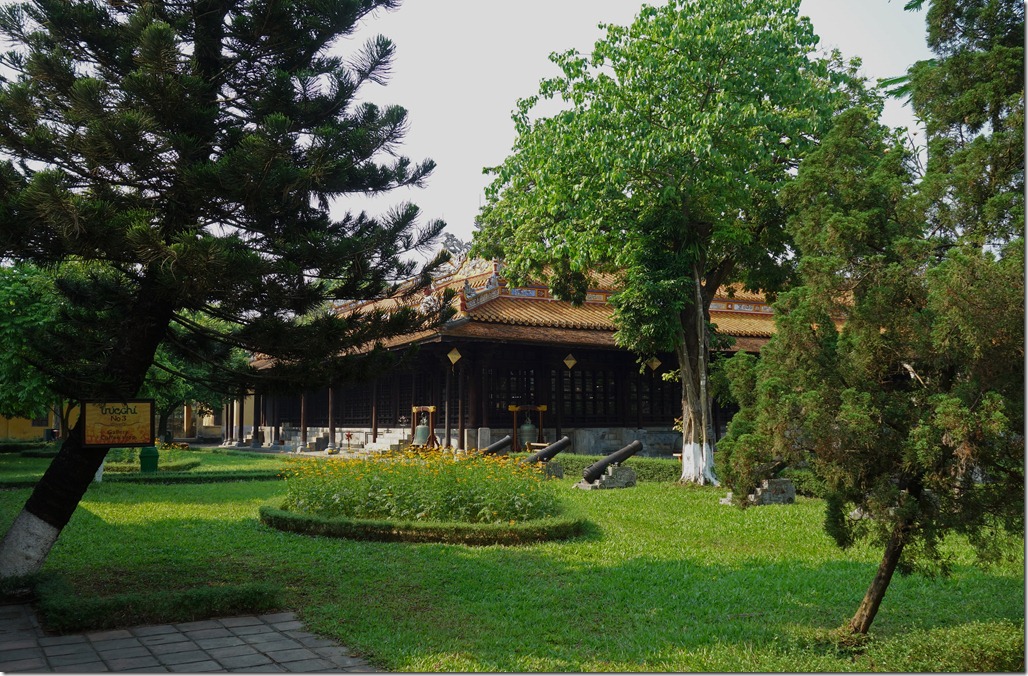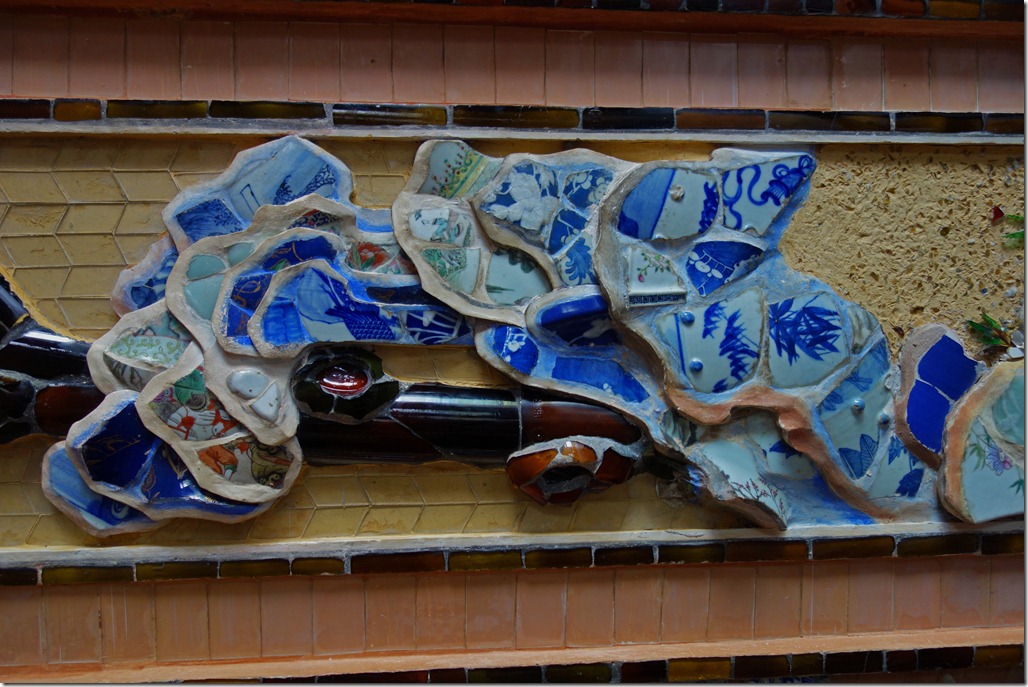Hue is known for two things: its amazing food and the Imperial Enclosure. Both were awesome, but those of you who know me can be sure that the first bit interests me more.
Hue has great food because it is said that one of the rulers was a very demanding eater. The result to this date is that they specialize in a number of dishes that are generally regarded as the best food in Vietnam. Remember my favourite noodle dish from Saigon, Bun Bo Hue? Yeah, the dish originated in Hue as the name would suggest (though oddly, no Bun Bo Hue I tried in actual Hue matched the one I had in Saigon, and sadly, my second favourite was in Singapore).
It will come as no surprise that my first stop was lunch at a restaurant near my hotel called La Carambole. They specialize in French and local cuisine, I stuck with the local. Below is a dish called Banh Kohai (translation, delicious pancake). They are made from rice flour with turmeric powder, stuffed with pork or shrimp, bean sprouts, and an assortment of herbs. I also had my first bowl of Bun Bo Hue here which was decent but not great.
After lunch I got on a moped and went off to Chua Dieu De, a Buddhist temple. The temple was erected by Emperor Gia Long at the start of the 19th century and is most recently known for being the site of a number of protests by dissident monks during the 1960’s.
Next, I rode west to check out the Imperial Enclosure. As the name would suggest, it is surrounded by a wall and moat. I only visited briefly as I had scheduled a tour through the enclosure for the following day. Sadly, much of the area was destroyed by U.S. bombing runs during the Vietnam war:
My last stop of the sightseeing day was Bao Quoc Pagoda, another Buddhist temple. The temple was built in 1670 by a Chinese Buddhist monk. Getting to the temple was an adventure. One of the busiest roads turns into a a one-way road at a random spot. By this point I was so accustomed to seeing Vietnamese drivers going the wrong way down streets that it took me two full blocks to realize that I was the one who was going the wrong way down a one-way street.
A shot of the surrounding countryside from my moped ride:
At night I went off to the Mandarin Café and tried what would be one of my favourite dishes in the country, Hue lemongrass skewers. As the name would suggest, the dish consists of minced pork wrapped around lemongrass stalks. They are served with rice paper and a variety of raw veggies (shredded carrots, cucumber, pomelo, and mint). You then build little spring rolls with your choice of vegetables:
A bar on Chu Van An.
The following day I went on a tour, starting with a market near an old covered bridge on the outskirts of the city:
The next stop was the Tomb of Khai Dinh, built from 1920 to 1931. This would be the last tomb built for a Vietnamese emperor as his son was the last Emperor of Vietnam, and was buried in Paris.
The inside of the main temple structure is far more colourful than the grey exterior would suggest. One of the more impressive features is the intricate mosaic work on the walls. They imported tons of fine porcelain and stained glass from Japan and China, only to have it smashed to form the various pieces of the mosaics. The tomb was so costly that the already unpopular French puppet ruler raised taxes by 30% in the nearby village to fund its construction:
The last tomb stop was the Tomb and summer palace of Tu Duc. The impressive structures were built in only three years, between 1864 and 1867. It is a really nice place to take a stroll, though even out there the brutal heat is unavoidable. Despite building the impressive complex as a tomb, the emperor was instead buried a location that remains secret to this day (the 200 laborers who built the grave were promptly beheaded).
The imperial enclosure. I really liked all of the amazing colours used throughout the enclosure:
A photo at one of the Garden Houses of Hue:
The Thien Mu Pagoda, built in 1601, and expanded in 1696 and 1714.
We finished up the tour with a brief boat ride on the river:
I’ll leave you with photos of my last meal in Hue. I had dinner at the Serene Palace Hotel. Their set menu is fantastic especially for the very reasonable price. Below is the local pomelo salad (pomelo, shrimp, pork, dried beef, sesame, coriander and peanuts):
Another helping of the awesome pork lemongrass skewers:
Another specialty of Hue, shrimp rice cakes (rice powder, shrimp, onion and fish sauce):











































Andres, la comida se ve muy sabrosa y saludable. El puerco es una comida muy sabrosa y no fácil de cocinar por su delicado punto de cocimiento. Abundan los mariscos y las verduras, bueno si hay pastas, pero veo que con las caminatas que das, no te has permitido subir de peso. Yo a esas alturas ya traería 10 kilos arriba.
Los lugares están padrisimos. Buenas fotos.
Gracias nuevamente por compartir tu viaje y experiencias con tus lectores.
Un abrazo.
LikeLike